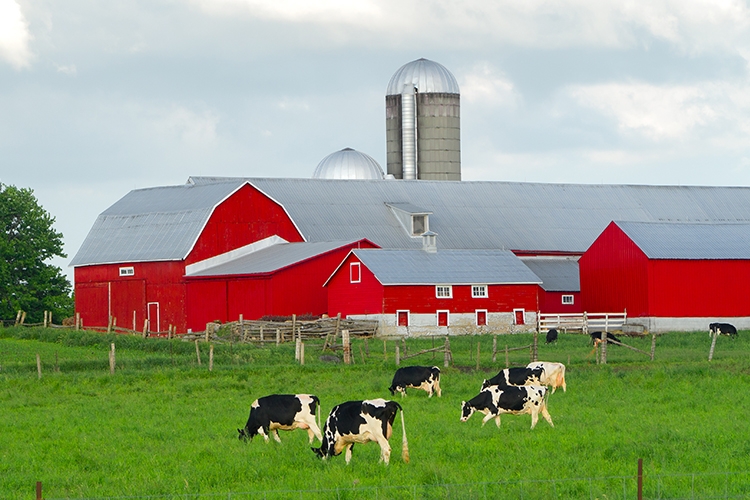By Ross Thurlow, engineering manager, EFI Global, New Zealand
Forensic investigators are often presented with puzzling cases where the obvious evidence doesn’t naturally point to the cause, and further in-depth analysis is required to determine exactly what went wrong.
While carrying out an on-site investigation in Napier, in the Hawkes Bay Region of New Zealand, we received an urgent call from insurers asking us to visit a recent loss at one of the largest dairy farms in the area. A cow shed with a milking production line covering around 2500 square meters had ‘blown over’ in the windy weather conditions. Fortunately, the cows weren’t in the shed at the time. A farm hand had a very narrow escape, running for his life as he witnessed the building progressively collapse like a house of cards.
The cow shed operates from 4am to 7pm, milking 750 cows twice a day in 3 herds. The cows are automatically ‘pushed’ through the building via a large 60-metre-wide mechanical device suspended from the top of the shed. Initially, the lack of milking facilities caused some animal welfare concerns – cows must be regularly milked. Fortunately, the milk system was still operational. As a quick fix, the business owner decided to clear the collapsed building away using a digger. Following emergency temporary fit-out works, they were able to continue milking manually once a day – significantly reducing output and reducing income by 50%. Business interruption losses were running at NZ$100,000 (US$61,000) a day.
We arrived on site a day after the collapse to identify the cause. Hawkes Bay is an exposed area, however the recorded wind speed at the time of the incident was nowhere near strong enough to trigger significant damage to an 8-year-old building. No other local structures had been affected. The remains of the building were now in a mangled heap in the middle of a nearby paddock, requiring some serious detective work to establish the cause.
What happened and why? Could structural defects have been caused by the milking machinery stopping and starting? Was it due to a lack of maintenance? Had the effluent produced by the herd eaten into the stanchions? Or was it just very windy at this location?
Uncovering the facts
Our forensic investigators picked their way through the rubble and twisted metal to find sections of the precast concrete floor to which the shed had been welded. On close inspection, we found that some of the welds were inadequate, and, in some cases, they hadn’t been carried out at all. Even though the wind level was significantly below code loading at the time, the building acting as a sail collapsed.
The strain on the deficiently welded joints caused the concrete floor to part, overloading the stanchions and inevitably, the shed failed. This was a manufacturing design fault, which we reported to the loss adjuster appointed to the claim. While cause was quickly established, our key input on this loss was assisting the farm in designing a practical solution that would get them back into full milk production within five days of the incident. This not only eased the stress on the animals, it also minimised the impact of the business interruption claim.
Identifying the manufacturing design fault might have solved this mystery, however it raised a troubling question as to how many more of these poorly manufactured farm buildings have been installed across New Zealand. This potentially poses a real hidden threat to human life and livestock.
While insurers will likely seek recovery from the original manufacturers of the cow shed, we can only wonder what measures were then taken to check for defective and insufficient welding on installations in other locations.
At EFI Global, our independent investigators have the professional structural engineering and technical scientific skills to determine why an event or failure has occurred. We can also recommend requirements for repair and assist in helping the business move forward quickly. However, even with all the highly detailed forensic evidence we’ve collected, it’s almost impossible to predict where or when a similar incident might occur. Risk managers beware of poorly manufactured farm buildings — they could be an accident waiting to happen.
For more on our EFI Global capabilities in New Zealand, please read the brochure or contact [email protected].

